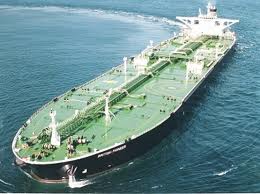Will the U.S. Ever Become Oil Self-Sufficient?
 A conversation that was once laughable is taking place today: Pundits are debating not if, but when, the United States will shed its dependence on foreign oil imports. It’s an issue that provokes much reminiscing, particularly as we remember the remarkable life of former Alberta premier Peter Lougheed. U.S. efforts to achieve security of supply have failed many times since Mr. Lougheed and his team skipped up the steps of the legislature in 1971.
A conversation that was once laughable is taking place today: Pundits are debating not if, but when, the United States will shed its dependence on foreign oil imports. It’s an issue that provokes much reminiscing, particularly as we remember the remarkable life of former Alberta premier Peter Lougheed. U.S. efforts to achieve security of supply have failed many times since Mr. Lougheed and his team skipped up the steps of the legislature in 1971.“At the end of this decade, in 1980,” President Richard Nixon declared in 1974, “the United States will not be dependent on any other country for the energy we need to provide our jobs, heat our homes and keep our transportation moving.”
Five years later, on the eve of when Mr. Nixon’s vision of energy independence was supposed to have been realized, another declaration was made to shake the curse of foreign oil addiction that had since doubled. “I am tonight setting a clear goal for the energy policy of the United States,” Jimmy Carter said in his famous Crisis of Confidence speech, “Beginning this moment, this nation will never use more foreign oil than we did in 1977 – never.”
Middle Eastern turmoil of that era served to reverse the U.S. appetite for offshore oil. But that path toward energy independence proved fleeting. As oil prices eased over the decade, the rate of U.S. imports grew again, effortlessly shattering Mr. Carter’s “never” mark by 1994.
Momentum pushing U.S. oil imports higher continued into the mid-2000s, with dependency growing from politically charged lands abroad (and from politically stable Alberta too).
It wasn’t until about 2010 that a reversing trend line began to convincingly show that the U.S. was growing its domestic oil production and slowing its consumption.
Today, not a week goes by without some agency, analyst or backroom pundit predicting U.S. self-sufficiency in oil.
The attached chart showing U.S. crude imports, shows why. Its top line points to a self-sufficient U.S. around 2030. If zero oil imports from a continental perspective is the goal – with Canada exempted from the foreign label – then the notional date of independence points to the mid-2020s.
Such timelines are almost certainly overzealous. To this point, new U.S. and Canadian production volumes have pushed out the easiest barrels – mostly those from Mexico and Venezuela. As more gets displaced, our continental oil will increasingly have to compete head-to-head with sources that are lower cost than Texas, Oklahoma and Alberta – especially if horizontal drilling and hydraulic fracturing technologies proliferate around the world over the course of the displacement period.
Weaning the U.S. from overseas oil creates other ripples with important global consequences, especially to Canada. Already, pipeline bottlenecks created by the surge in production in both countries have induced significant and persistent price discounts to world markets.
Where does the Canadian oil industry fit into a United States that is now whispering about the possibility of being rid of foreign oil in a tangible time horizon? Extraction technologies and consumption patterns are changing the supply-demand balance quickly, so it’s a question that is going to amplify over the months and years to come.
Oil dependence means different things to an American than a Canadian. Down south it’s about being hostage to a hostile producers on the other side of the world. In Canada, oil dependency means being captive to a single export market. As the prospect of oil independence becomes a viable discussion for the first time in 40 years, it’s crucial that both sides ensure that their interests are aligned for mutual benefit.
You can return to the main Market News page, or press the Back button on your browser.

